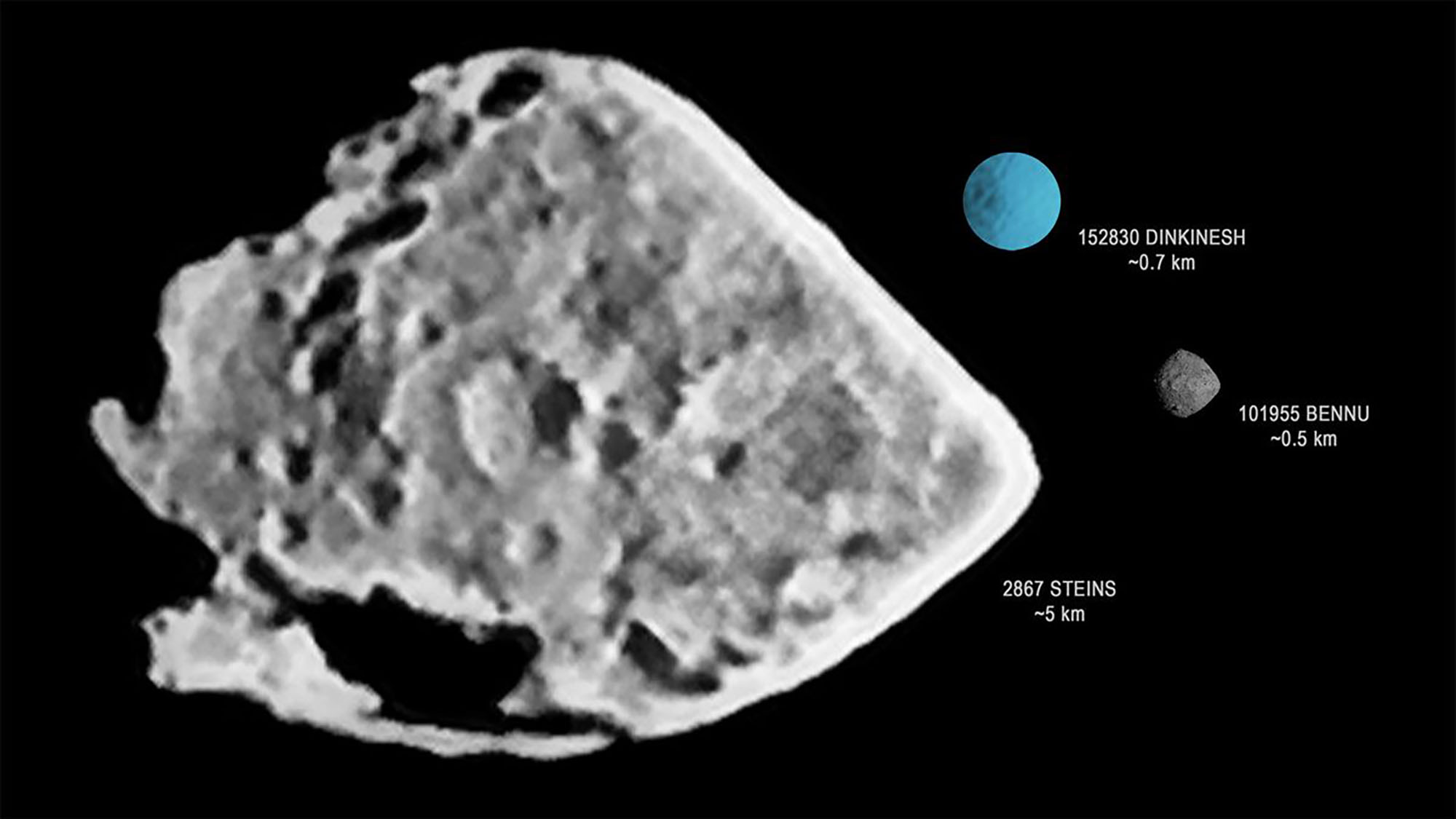

On November 1, NASA’s Lucy spacecraft successfully completed its first asteroid flyby. The 56 feet-long spacecraft came within 230 miles of the asteroid Dinkinesh aka “Dinky.” This fairly small space rock is in the main asteroid belt between Mars and Jupiter.
[Related: Meet Lucy: NASA’s new asteroid-hopping spacecraft.]
Dinkinesh is the first of 10 asteroids the probe will visit over the next 10 years. The asteroid is about 10 to 100 times smaller than the Jupiter Trojan asteroids that are the main target of the Lucy mission. Dinkinesh is another name for the Lucy fossil that this mission is named after. The 3.2 million-year-old skeletal remains of a human ancestor were found in Ethiopia in 1974.
Lucy zoomed by Dinkinesh at about 10,000 miles per hour. This encounter was the first in-flight test of the spacecraft’s terminal tracking system.
“The Lucy operations team has confirmed that NASA’s Lucy spacecraft has phoned home after its encounter with the small main belt asteroid, Dinkinesh,” NASA wrote in a blog post. “Based on the information received, the team has determined that the spacecraft is in good health and the team has commanded the spacecraft to start downlinking the data collected during the encounter.”
It will take NASA up to a week to download the data on how Lucy performed during this first in-flight test during the encounter. NASA planned for the high-resolution grayscale camera onboard Lucy to take a series of images every 15 minutes. Dinkinesh has been visible to Lucy’s Long Range Reconnaissance Imager (L’LORRI) as a single point of light since early September. The team began to use L’LORRI to assist with the navigation of the spacecraft.
Lucy’s thermal infrared instrument (L’TES) should also begin to collect data. Since L’TES was not designed to observe an asteroid quite as small as Dinkinesh, the team is interested to see if it can detect the half-mile wide asteroid and measure its temperature during the encounter.
Astronomers plan to use the data from this approach to gain a better understanding of small near-Earth asteroids and if they originate from larger main belt asteroids.
Launched in October 2021, NASA’s Lucy mission is the first spacecraft set to explore the Trojan asteroids. These are a group of primitive space rocks orbiting our solar system’s largest planet Jupiter. They orbit in two swarms, with one ahead of Jupiter and the other lagging behind it. Lucy is expected to provide the first high-resolution images of what these space rocks look like.
There are about 7,000 asteroids in this belt with the largest about 160 miles across. The asteroids are similar to fossils and represent the leftover material that is still hanging around after the giant planets including Uranus, Neptune, Jupiter, and Saturn formed.
[Related: New image reveals a Jupiter-like world that may share its orbit with a ‘twin.’]
In 2024, Lucy will return towards Earth for a second gravity push that will give it the energy needed to cross the solar system’s main asteroid belt. It is expected to observe asteroid 52246 Donaldjohanson in 2025. This asteroid is named after American paleoanthropologist Donald Johnson, one the scientists who discovered the Lucy fossils.
It will then travel into the leading Trojan asteroid swarm. After that, the spacecraft will fly past six Trojan asteroids: Eurybates and its satellite Queta, Polymele and its yet unnamed satellite, Leucus, and Orus.
In 2030, Lucy will return to Earth for yet another bump that will gear it up for a rendezvous with the Patroclus-Menoetius binary asteroid pair in the trailing Trojan asteroid swarm. This mission is scheduled to end some time in 2033.
